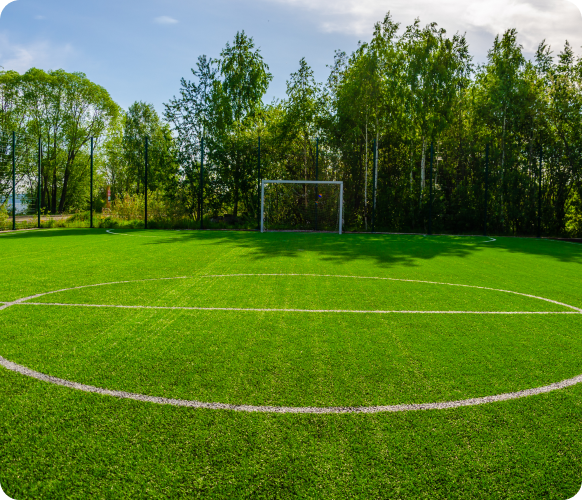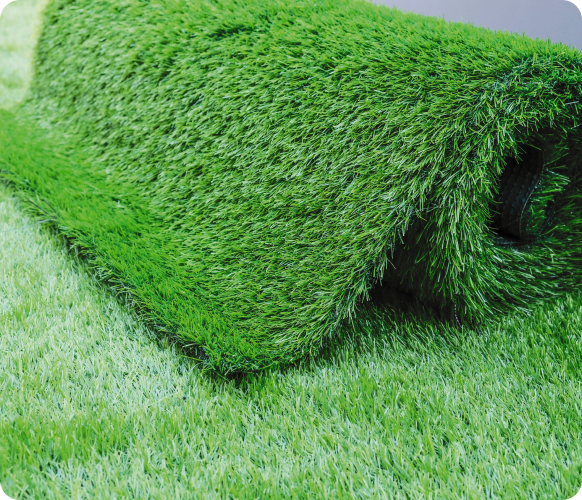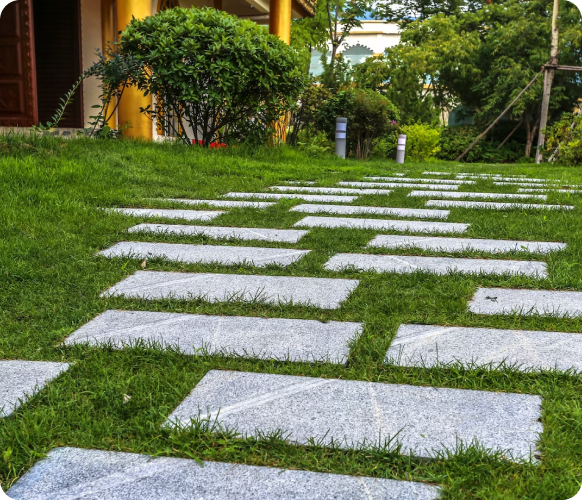No products in the cart.
Return To ShopSecure Turf
LAYING SYNTHETIC GRASS ON THE GROUND
If you’re considering installing synthetic grass directly on the ground, it’s not the best approach for long-term use. Unless it’s intended as a temporary solution for an event, exhibition, or party, you should ensure the installation is done correctly for lasting results. It is highly recommended to properly prepare the base before laying the turf. The base should be constructed using the correct method, which may involve either a crushed rock base or concrete. Crushed rock is often the most economical and practical choice for several reasons
Excellent permeability
Easier and more cost-effective to install
The most economical option

This approach ensures better drainage and longevity of the synthetic grass.
How to Secure Artificial Turf to the Ground
You can secure synthetic grass to the ground using the following methods:
U-shaped pegs
Spiral nails
Staples
Screws
Glue (for concrete areas)
In most cases, you’ll need to box in the perimeter with BendaBoard (plastic or timber edging). This should be done before building the base with crushed rock or dust. BendaBoard is made from 100% recyclable plastic, offering the benefit of a lifetime warranty while also helping the environment by reducing plastic waste in water.
When laying the turf, you can use staples or screws to secure it to the BendaBoard. In some situations, spiral nails can also be used along the perimeter. It is not recommended to use nails or pegs in the middle of the surface area, as the turf needs to breathe and expand/contract with temperature changes.
If there are joints in the turf, we recommend using U-shaped pegs where the joints meet to minimize visibility over time. If your turf ends at a concrete edge, you can use artificial grass adhesive to secure it.
Understanding your surface area is essential to properly securing your artificial grass to the ground

INSTALLING ARTIFICIAL GRASS ON CONCRETE
Artificial grass is an excellent solution for businesses looking to transform their plain concrete floors or entryways into vibrant, welcoming spaces. It’s particularly popular for restaurants aiming to bring a fresh, green look to both indoor and outdoor areas. The installation process is straightforward, and the best part is that it requires minimal upkeep compared to natural grass, making it an ideal low-maintenance alternative.
Installing artificial grass on concrete is relatively easy, but following the proper procedure is crucial for a long-lasting result. If you’re working with a tight budget and there are no concerns about water permeability, you can secure the grass with special artificial grass glue or commercial-grade double-sided tape. Before applying any adhesive, it’s important to thoroughly clean the concrete surface to ensure proper adhesion.
Once the surface is clean, apply double-sided tape along the perimeter and any other areas where needed. If you’re using adhesive, apply it in the necessary spots, and then lay the artificial grass over the surface. This method ensures the grass stays securely in place while achieving a polished, realistic appearance
Installing Synthetic Turf on Pavers or Other Surfaces
Installing synthetic turf on pavers or other solid surfaces is a creative and practical way to enhance outdoor spaces. In most cases, artificial grass can be easily installed using screws, glue, or double-sided tape. However, it’s important to consider factors such as water permeability, surface leveling, and ensuring the pavers are evenly laid. Before installation, take the time to properly prepare and level the area. For better drainage, consider using a platform like K9 Air Drain Cells to allow water to flow through.

When securing the turf, make sure to use enough glue, tape, or screws across the entire surface to ensure a firm hold. You don’t want your artificial grass shifting over time. As there are different methods for securing turf depending on the surface, it’s crucial to choose the right approach. Properly securing the grass is one of the most important steps in the installation process, so it’s always a good idea to consult with professionals to ensure the job is done correctly.
Installing Synthetic Turf on Wood and Other Surfaces
You can also easily install artificial grass on wood or decking surfaces using nails throughout the grass to secure it to the wood surface. This is another unique and creative outdoor use for artificial grass. Be sure to install the grass with enough nails or screws throughout the surface to ensure proper installation – you don’t want your artificial grass going anywhere.
As you can see, there are plenty of ways that you can easily secure your artificial grass to the ground, you just have to know which surface requires which method. Correctly securing your grass to the surface is one of the most important steps in the entire process, so always check with the professionals first to make sure you’re installing it correctly.






